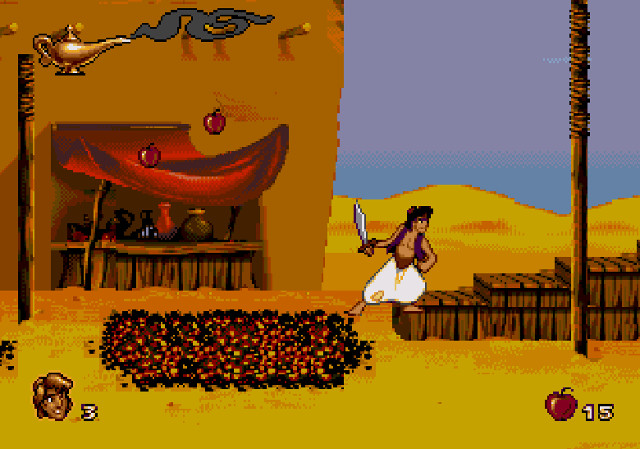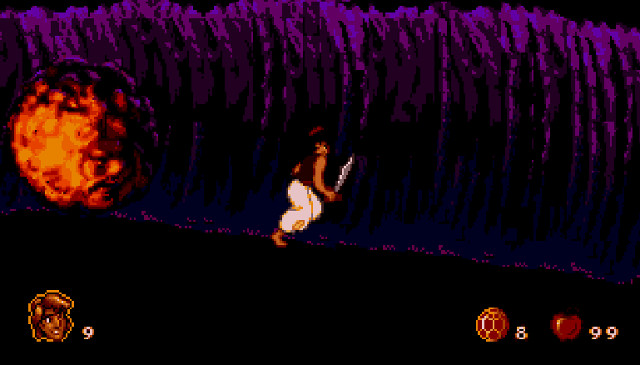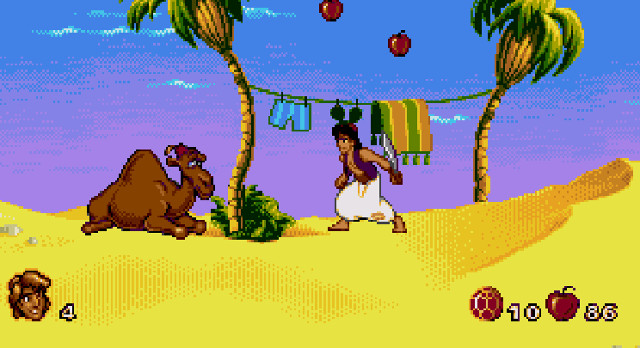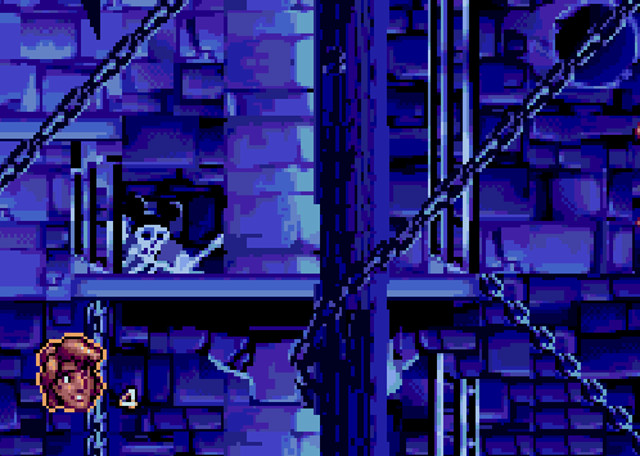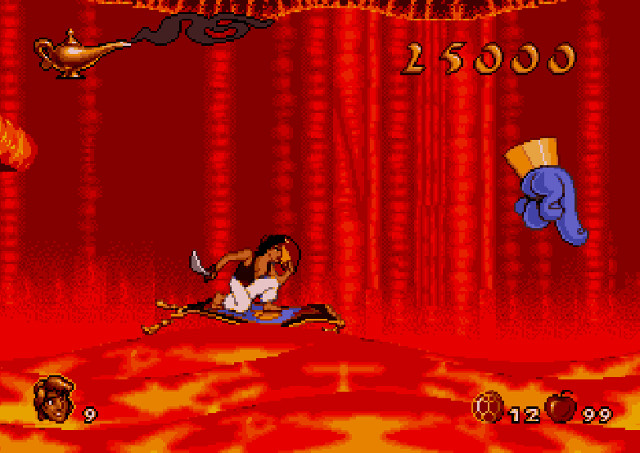Disney’s Aladdin for Sega Genesis Is Still Ridiculously Good
Licensed video games have been hit or miss for pretty much the entire history of gaming. However, in the early- to mid-1990s, Disney’s properties were making the transition to the gaming world unbelievably well. DuckTales for the NES perhaps led the charge in 1989 in the hands of Capcom, who created a very memorable game with some of the best music of its era.
Virgin Interactive Entertainment would collaborate with Disney for a while, creating the Holy Trinity of Disney games for the Genesis: Disney’s Aladdin, Walt Disney’s The Jungle Book, and The Lion King. (Virgin would also develop more forgettable titles like Disney’s Pinocchio.) Of these games, Aladdin is probably the best.
Aladdin also appeared on the Super NES, but this was an entirely different game developed by Capcom. There’s been much argument over which version was superior, but I’ve always been firmly on the Genesis side of the debate. Shinji Mikami, the designer on the SNES game, prefers the Genesis version to the one he’d designed. He once told Polygon, “If I didn’t actually make [the SNES game], I would probably buy the Genesis one. Animation-wise, I think the Genesis version’s better. The Genesis version had a sword, actually. I wanted to have a sword.” (Then again, David Perry, designer of the Genesis version, prefers Capcom’s take.)
I’ve gone back to Disney’s Aladdin (the Genesis version) several times since its release in 1993, and, every single time, I am surprised at how well it continues to hold up over the years.
For one, it’s still an unarguably beautiful game. This is thanks, in huge part, to the fact that it used hand-drawn animation by “about 10” Disney animators, some of whom had worked on the corresponding film. Their attention to detail is painstaking, with fluid animations, an impressive color palette, and backgrounds just dripping with Disney charm. It was even packed full of Disney-related visual Easter eggs, like Goofy’s image on a pillar:
Or a Mickey Mouse hat on a clothesline:
Or, a bit more macabre, skeletons in the Sultan’s Dungeon who were also wearing Mickey Mouse hats:
It sounded great too, with 16-bit versions of songs from the film mixed in with original pieces by Donald Griffin and the incredibly talented Tommy Tallarico.
One of the most surprising things to me personally, however, is that this game has a legacy of being extremely difficult. In retrospect, I guess I can see that, with its Mega Man-esque disappearing block sequences in the Sultan’s Dungeon, its punishing long jumps and persistent bat enemies in the Cave of Wonders, and its Escape stage, a checkpoint-less boulder chase reminiscent of Raiders of the Lost Ark. It even has a magic carpet sequence, called Rug Ride, that might bring to mind the infamous hoverbikes from Battletoads. (Unlike the hoverbike sequence, however, Rug Ride will only let you die three times before it tells you “Nice try” and lets you skip ahead to the next stage.)
However, I’ve never found it all that difficult. The first time I played it, I was a little disappointed at how far I was able to get on my first try. I even used to attempt no-damage runs as a kid, and I could get pretty far through it without taking a single hit. A lot of that muscle memory has stuck with me over the years. Recently, a friend and I saw the game at a local pub and I picked it up and soared through the first section with relative ease before the atmosphere started getting rowdy and we decided to leave.
Whether you think Disney’s Aladdin is a cakewalk or a frustrating, controller-breaking madhouse of difficulty, it’s hard to deny just how well-designed it is. Even decades later, it retains a good portion of its charm — a feat that’s practically magic, especially for a licensed Disney game from 1993.

